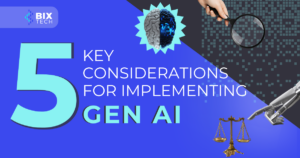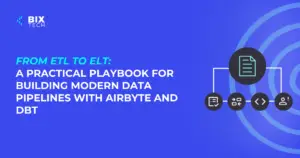Privacy-Preserving Machine Learning: Protecting Data While Powering Innovation

Sales Development Representative and excited about connecting people
In today’s data-driven world, machine learning is transforming industries—from healthcare to finance to retail—by enabling smarter insights, automation, and innovation. But as organizations leverage more data, concerns about privacy and security are growing louder. Enter Privacy-Preserving Machine Learning (PPML): a cutting-edge field that empowers businesses to harness the power of AI and data science without compromising sensitive information.
In this post, we’ll explore what PPML is, why it matters, the core techniques powering it, and practical ways your organization can start implementing privacy-first AI solutions.
What Is Privacy-Preserving Machine Learning?
Privacy-Preserving Machine Learning (PPML) refers to a set of methods and technologies that allow machine learning models to be trained, deployed, and used without exposing sensitive or personally identifiable information (PII). The main goal is to enable organizations to extract value from data while strictly respecting user privacy, often in compliance with regulations like GDPR, HIPAA, and CCPA.
PPML is particularly relevant when:
- Training data contains sensitive information (medical records, financial transactions, etc.)
- Multiple parties want to collaborate on AI projects without sharing raw data
- Organizations need to demonstrate trustworthiness and transparency to their customers
Why Does PPML Matter?
1. Regulatory Pressure and Data Ethics
With privacy regulations tightening worldwide, organizations must ensure that their data practices meet compliance standards. Traditional machine learning approaches often require centralizing vast amounts of data, which increases the risk of data breaches and misuse. PPML offers a solution by embedding privacy at the core of AI workflows, reducing legal risks and promoting ethical data use.
2. Building Consumer Trust
Customers are increasingly aware of data privacy issues. Companies that can demonstrate robust privacy practices stand out in the market, building trust and loyalty. By adopting privacy-preserving techniques, organizations not only protect their users but also differentiate themselves as privacy-forward brands. Learn more about the importance of building trust in digital business interactions.
3. Unlocking Collaboration and Innovation
Sometimes, the most valuable insights come from combining data across organizations or departments. Privacy-preserving machine learning makes secure, collaborative AI possible—enabling joint research or business partnerships without exposing confidential information.
Core Techniques in Privacy-Preserving Machine Learning
PPML is a rapidly evolving field, but several foundational techniques are already making an impact:
1. Federated Learning
Federated learning is a collaborative approach where machine learning models are trained across multiple decentralized devices or servers holding local data samples—without transferring raw data to a central server.
- Use Case: Hospitals in different regions train a common model on patient data, improving diagnostics without sharing sensitive records.
2. Differential Privacy
Differential privacy introduces mathematical “noise” into data queries or model outputs, ensuring that individual data points cannot be reverse-engineered from aggregate results.
- Use Case: Tech companies use differential privacy to collect usage statistics from millions of devices, gathering useful trends while guaranteeing user anonymity.
3. Homomorphic Encryption
Homomorphic encryption allows computations to be performed directly on encrypted data, generating encrypted results that can be decrypted by the data owner—never exposing raw data during processing.
- Use Case: Financial institutions can run credit risk analysis on encrypted client data, protecting confidentiality throughout the workflow.
4. Secure Multi-Party Computation (SMPC)
SMPC enables multiple parties to jointly compute a function over their inputs while keeping those inputs private.
- Use Case: Two companies want to find overlapping customers for a joint marketing campaign but don’t want to share their full lists.
Real-World Applications of PPML
Privacy-preserving machine learning is already being used to solve real business challenges:
- Healthcare: Hospitals use federated learning to train AI models on medical images, improving disease detection while keeping patient data local and private.
- Finance: Banks employ homomorphic encryption to analyze transaction data for fraud detection without exposing individual transaction details.
- Retail: E-commerce platforms use differential privacy to analyze purchasing trends, helping them optimize inventory without compromising customer identities.
How to Start Implementing PPML in Your Organization
1. Identify Sensitive Data Flows
Start by mapping where sensitive data is collected, stored, and processed in your AI or machine learning pipelines. This assessment will help prioritize which workflows require privacy enhancements.
2. Choose the Right Technique
Select PPML methods based on your business needs and technical constraints. For example, federated learning is ideal for distributed data environments, while differential privacy is suited for statistical analysis and reporting.
3. Leverage Existing Tools and Platforms
Many cloud vendors and open-source projects now offer privacy-preserving machine learning tools. Integrating these into your workflows accelerates adoption and reduces development costs.
4. Stay Informed and Compliant
The field of privacy-preserving AI is evolving rapidly. Keep up with best practices, regulatory changes, and new technologies to ensure your solutions remain secure and compliant. For a deeper dive into emerging data science trends, check out our guide on the data science revolution in business.
5. Educate Stakeholders
Privacy in AI is not just a technical challenge—it’s a cultural one. Educate business leaders, developers, and data scientists on the value of privacy-preserving techniques to foster a privacy-first mindset organization-wide.
Challenges and Future Directions
While PPML offers tremendous promise, it’s not without challenges:
- Performance Overhead: Techniques like homomorphic encryption can add computational complexity and slow down processing.
- Accuracy Trade-Offs: Adding noise for differential privacy may slightly reduce model accuracy, requiring careful tuning.
- Integration Complexity: Combining PPML methods with legacy systems and existing AI pipelines can be technically demanding.
Despite these hurdles, advances in hardware, algorithms, and open-source frameworks are making privacy-preserving machine learning more accessible. Expect to see even more seamless, secure, and scalable PPML solutions in the near future.
Final Thoughts
Privacy-preserving machine learning represents the future of responsible, trustworthy AI. By adopting PPML, organizations can unlock the full potential of machine learning while protecting what matters most—the privacy and security of their customers and stakeholders.
Curious about how advanced AI techniques can transform your business? Explore our comprehensive guide to language models and business applications for more inspiration on building a privacy-first, AI-driven organization.
Ready to future-proof your AI strategy? Start prioritizing privacy in your machine learning initiatives today—because innovation and trust go hand-in-hand.









